Have you heard of the Chattahoochee River that cuts through the southeast? If you have visited cities like Chattanooga, Tennessee, or Atlanta, Georgia, you should know the name of this super-important waterway that is an important cultural and economic driver in Georgia! Stretching from the northern part of Georgia to the Florida panhandle, the Chattahoochee has a long legacy of shaping the culture and commerce of communities in this part of North America. This article introduces you to some of the weirdest and most interesting fun facts that teach you all about this important feature of the landscape. First, let’s cover the basics of what the Chattahoochee is and where it is located.
What is the River?
The Chattahoochee River is a freshwater river that begins in the Blue Ridge Mountains of Georgia, flows along the Alabama-Georgia border, and makes its way into the Florida panhandle, where it becomes the “Apalachicola River.”

The Chattahoochee River provides an important source of water for many plant and animal species.
©Marcus E Jones/Shutterstock.com
How Far Does the River Flow?
The Chattahoochee River runs for 434 miles in total, becoming the Apalachicola River in Florida before flowing into the Gulf of Mexico. The Apalachicola River is approximately 160 miles long.
Where is the River Located?
The Chattahoochee River begins as a tiny stream in North Georgia in the northeastern corner of the state in the Blue Ridge Mountains. It starts off in Union County, Georgia, an area that belongs to the southern part of the Appalachian Mountains. From there, it flows southwest, cutting across North Georgia and crossing toward Atlanta. After that, it continues south, following the Georgia and Alabama border until the states intersect with Florida. After that, the Chattahoochee River flows into the Florida panhandle, where it technically ends in the city of Chattahoochee, Florida. While it is still the same river, in Florida the same waterway is known as the “Apalachicola River.” The thus-named Apalachicola River flows 160 miles south until it ends in the city of Apalachicola, Florida, flowing into the Gulf of Mexico.

The Chattahoochee National Forest near Atlanta, Georgia has many trees that turn gorgeous colors in the autumn.
©Black Oak Photography/Shutterstock.com
10 Fun Facts About the Chattahoochee River
The Chattahoochee River is a culturally, environmentally, and historically important river in the southeastern part of the United States. The rest of this article explores some fun and perhaps little-known facts about the Chattahoochee River, so you can learn all about this important waterway in the southern U.S.! Let’s jump in and discover ten interesting facts about the Chattahoochee River now.
1. The Chattahoochee Is Inhabited By Dozens of Important Plant and Animal Species
When it comes to biological diversity, the Chattahoochee River Basin is an important habitat for dozens of different plants and animals. The Chattahoochee River Basin is home to nine threatened and endangered plant species, as well as 24 species of freshwater aquatic turtles, 37 species of salamanders and sirens, 30 species of frogs and toads, and the American alligator! The Chattahoochee is also home to over 20 fish species, including catfish, bass, and trout. The river itself is also one of only two trout streams in North America that make their way through an urban area. The Chattahoochee flows through Atlanta. The other, Bow River in Canada, runs through the Canadian city of Calgary.
2. The Chattahoochee Is One of the Most Heavily Used Water Resources in Georgia
As the Chattahoochee River drains an area of a whopping 8,770 square miles, the river is one of the most important surface water resources in the entire state of Georgia. In fact, this river is a critical source of hydroelectric power. 13 dams constructed along the river’s length generate hydropower and electricity to a total of 16 hydropower plants, out of 22 in the Chattahoochee River Basin. The river also has three other lock-and-dam facilities constructed along its length.
In addition to this, the Chattahoochee provides about 70% of all of the drinking water used throughout metro Atlanta! The river provides over 300 million gallons of water each day.
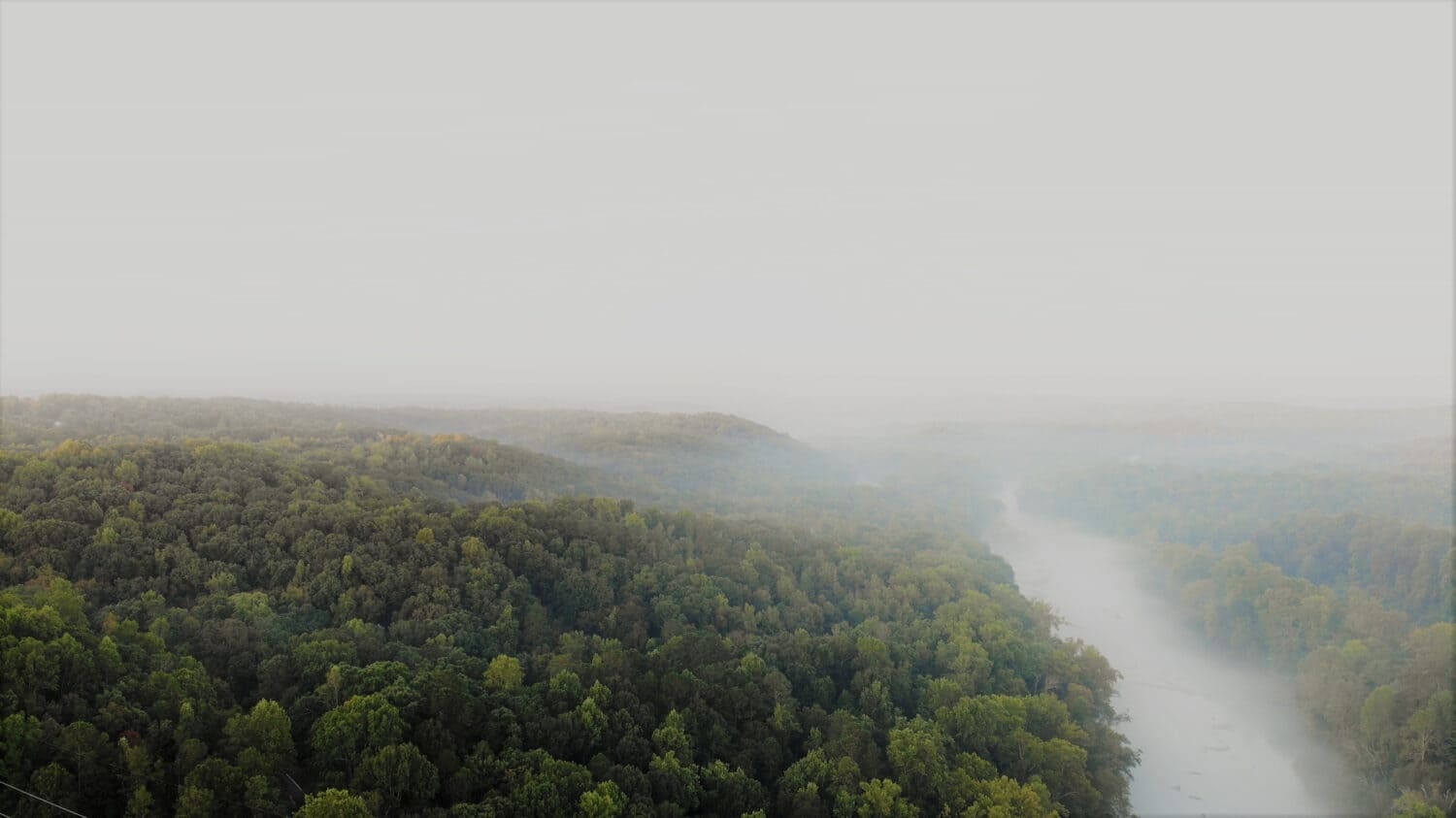
The Chattahoochee River is connected to Lake Lanier at the Buford Dam in Forsyth County, Georgia.
©Austin Handle/Shutterstock.com
3. The Chattahoochee Provides Many Opportunities for Outdoor Recreation
Across Georgia, the Chattahoochee River is an important feature in many local parks and the local landscape. For example, the Chattahoochee River National Recreation Area includes 48 miles of river access and 16 parks. The Chattahoochee River also contributes to Lake Lanier, which offers 540 miles of shoreline and numerous opportunities for boating, camping, and hiking along its shorelines. The Chattahoochee Bend State Park, one of the largest state parks in Georgia, protects five miles of the river and has parkland with over six miles of hiking trails.
From hiking to tubing to boating and rafting, the Chattahoochee offers it all! In fact, did you know that the Chattahoochee has some of the biggest rapids east of the Colorado River? Just go to Whitewater Express, in Columbus, where you can enjoy an exciting rafting experience! Those who want a more tame way to engage the Chattahoochee will also find ample chances for quiet reflection, hiking, or wading into the water’s calmer areas.
Together, these and other nature centers and parks help to preserve the Chattahoochee River’s beauty while connecting park visitors to nature.
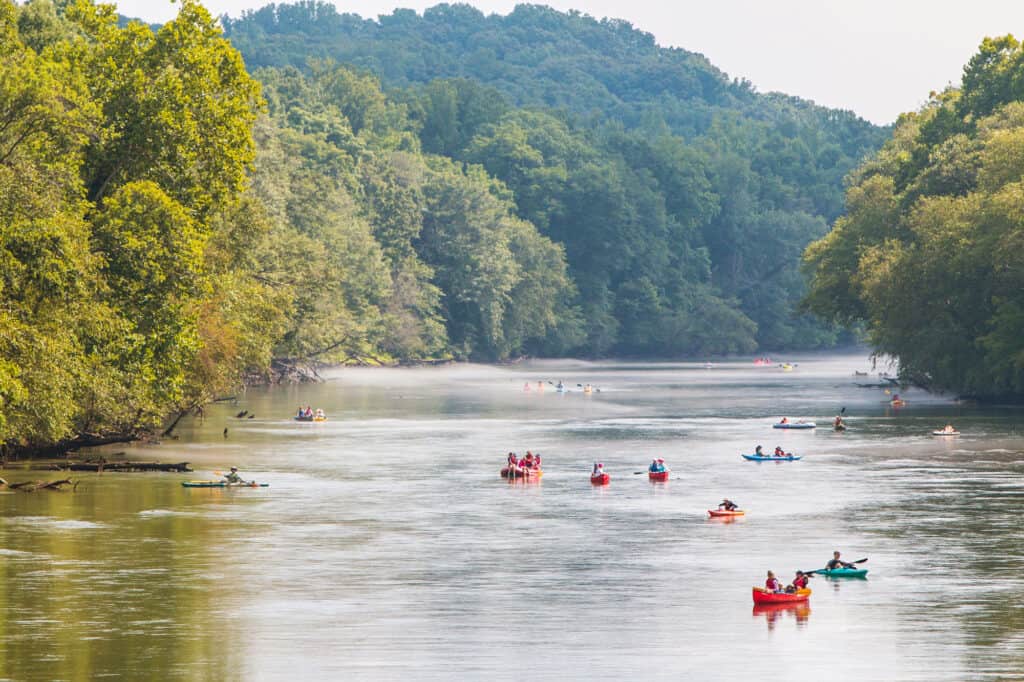
The Chattahoochee attracts many visitors who boat and kayak down the river each year.
©iStock.com/BluIz60
4. The Chattahoochee’s Name Means “Painted Rock”
Long before the United States was formed, Native American people lived along the Chattahoochee River. These included the Cherokee and Creek nations, which lived alongside the river. Before being displaced by European settlers, the Cherokees and Creeks had both long existed in the mountains that are now part of North Georgia, though the Creeks primarily inhabited parts of southern Georgia.
These people are said to have given the Chattahoochee its name, calling it “the river of painted rocks.” This name is said to refer to colorful granite rock outcroppings within the Chattahoochee River.
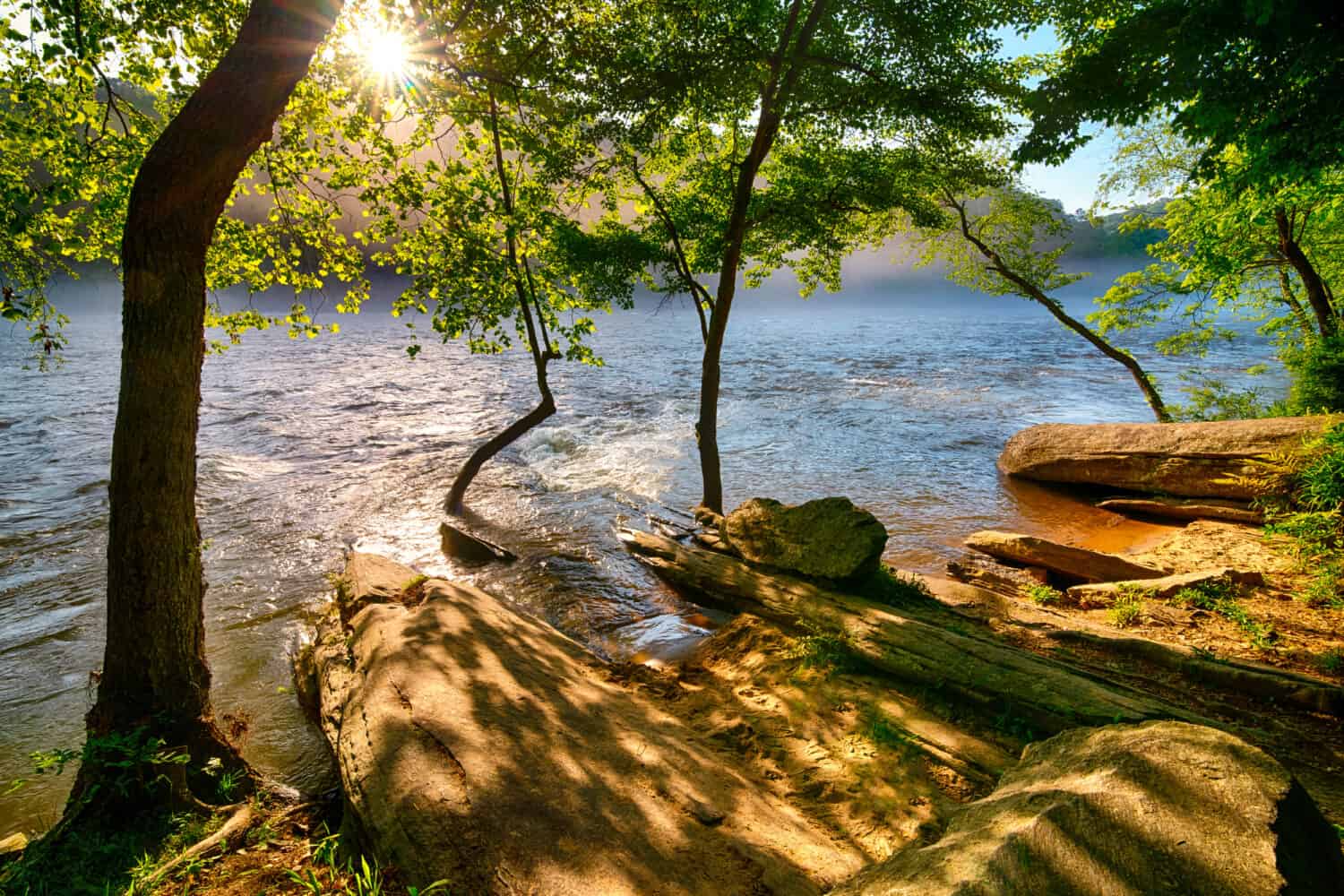
The Chattahoochee may have gotten its name from the Native American word for “painted rocks,” referring to colorful rock outcroppings.
©Rob Hainer/Shutterstock.com
5. The Chattahoochee Forms Part of the Border of Alabama and Georgia
The Chattahoochee River helps to divide the two states of Alabama and Georgia. Along this stretch of the river, a series of dams break the river up into pieces. On the northern side, the Chattahoochee River starts to touch Alabama at West Point Reservoir. The West Point Reservoir is a Corps of Engineers impoundment. As the river flows south, it eventually reaches Lake Eufala along the border of Georgia and Alabama. After that, the river flows freely until it reaches Chattahoochee, Florida.
Alabama and Georgia have an agreement that limits the fish that can be caught from the Alabama portion of the river.
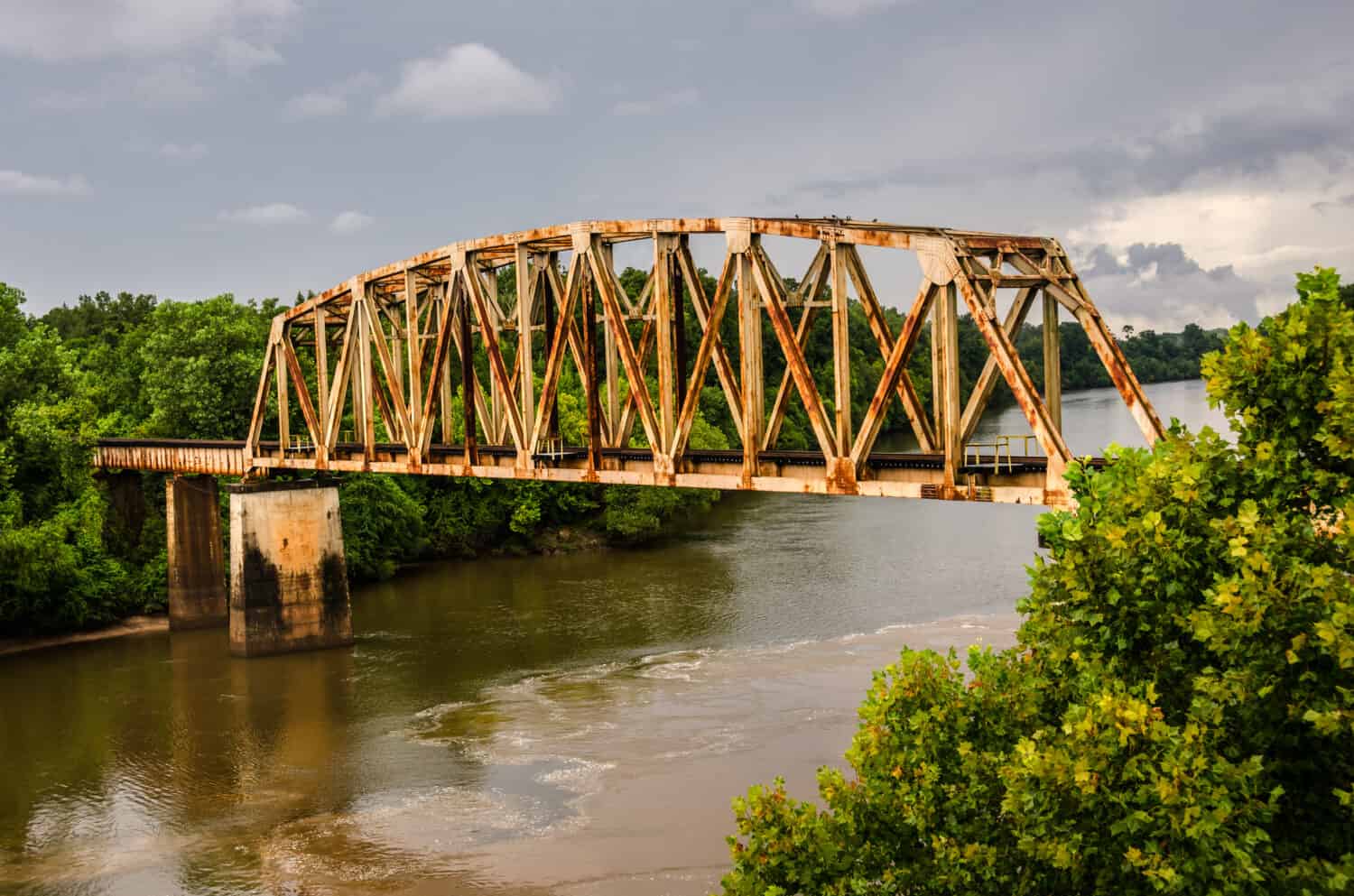
The southern part of the Chattahoochee forms the border between Alabama and Georgia, requiring bridge crossings to move between the two states.
©Sue Smith/Shutterstock.com
6. People Have Lived Beside the Chattahoochee for Thousands of Years
The Chattahoochee River has had an important role in human societies for thousands of years! While it is now a vital part of communities throughout Georgia, the river has been an important source of food, drinking water, transportation, and more for much longer. In fact, archaeologists have found evidence of people living beside the Chattahoochee River dating back to about 1000 B.C.E.! In addition to that, according to research, at least 16 different settlements existed along the Chattahoochee River between 800 and 1600 A.D.

The Chattahoochee has been an important source of food, drinking water, and transportation for people for thousands of years.
©Vivid Studio/Shutterstock.com
7. The Chattahoochee Was Important During the Civil War
When European settlers arrived in North America, the Chattahoochee River had an important role in the development of communities in Georgia. In particular, it made the development of Columbus, Georgia, possible, and powered the development of the city as an important southern industrial city. This allowed the city to play an important role in providing support to the Confederate Army during the Civil War.
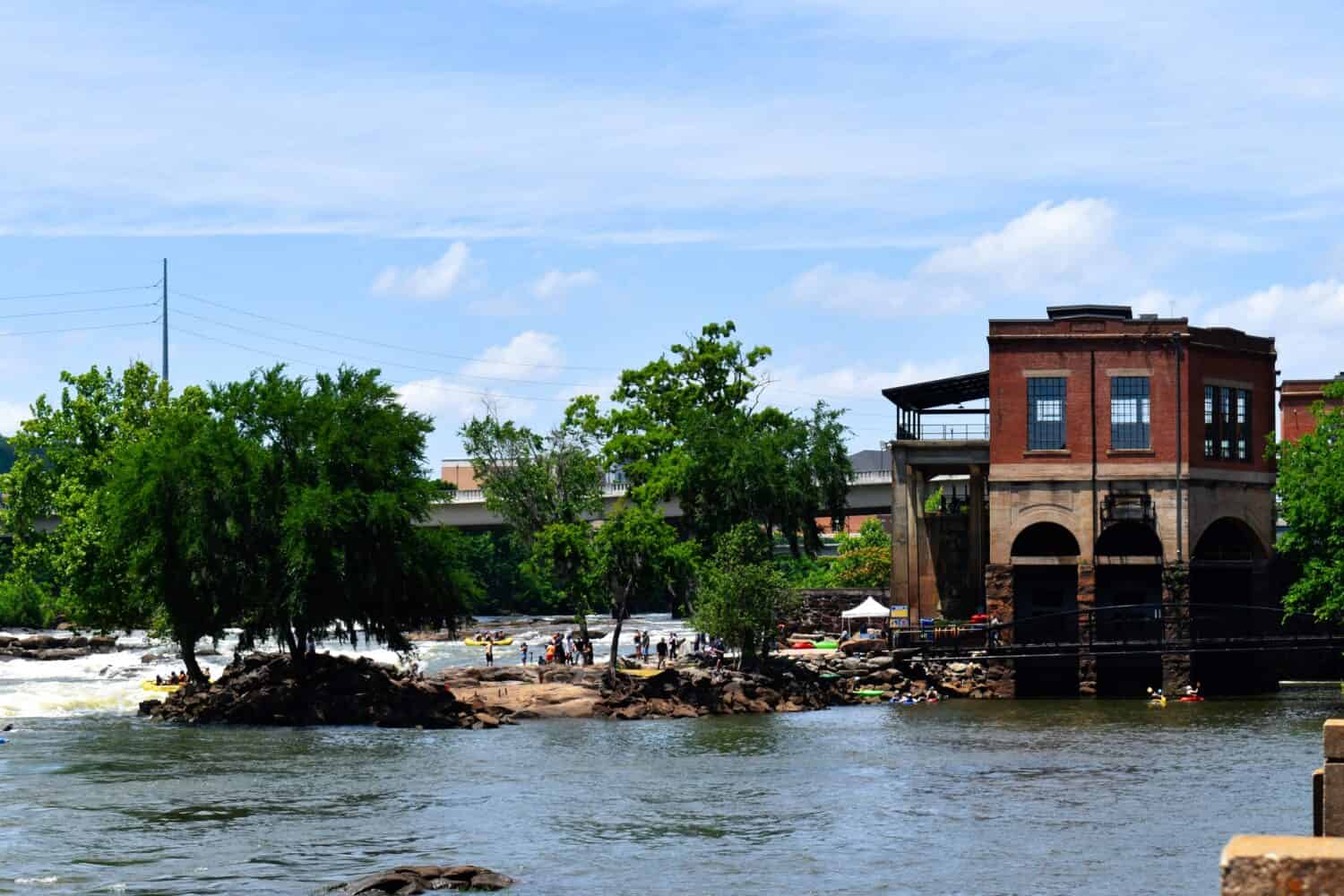
The Chattahoochee had an important role in the development of Columbus, Georgia.
©LiliePhoto/Shutterstock.com
8. The Chattahoochee Has Inspired Hundreds of Artists
The natural beauty of the Chattahoochee River has inspired hundreds of artists, including musicians, writers, photographers, painters, and even movie producers! Over time, visitors and southern locals alike have created works depicting the river and the surrounding area. For example, the renowned Georgia native Sydney Lanier wrote the poem “Song of the Chattahoochee.” Another artist, the painter Jessie Dubose Rhoads, created over 150 paintings about people living in the Chattahoochee River Basin area during the early 1900s. Want to see some art inspired by the Chattahoochee River? Visit the Chattahoochee Nature Center in Fulton County, Georgia. A local artist named Thomas Turner created a mural called “The Flow.” This piece celebrates the Chattahoochee River watershed area and draws attention to the plants and animals sustained by the river.

The Chattahoochee has inspired works of arts from many professional and amateur artists.
©Bradley Huchteman/Shutterstock.com
9. The Chattahoochee Hosts One of the Largest Rowing Regattas in the World
Every year, the city of Chattanooga, Tennessee hosts the Head of the Hooch Regatta, previously known as the Head of the Chattahoochee Regatta. This two-day rowing regatta takes place every year on the first weekend in November. It attracts over 2,000 boats to race over two days, with rowers coming from across the world. Since 1981, the rowing celebration has attracted rowers and onlookers to its races over the weekend.

Many rowers take their boats out onto the Chattahoochee River each year.
©Frank White Jr/Shutterstock.com
10. The Chattahoochee River Contributes to Millions in Economic Benefit
This river is vital to the Georgia economy! Tourism to the Chattahoochee River National Recreation Area alone creates over $152 million in economic benefit each year. In total, the area creates more than $235 million in economic benefits for the communities around the park. This demonstrates how national parks are an important part of the United States economy, and every taxpayer dollar used to support the parks gets multiplied in its return to the local communities.
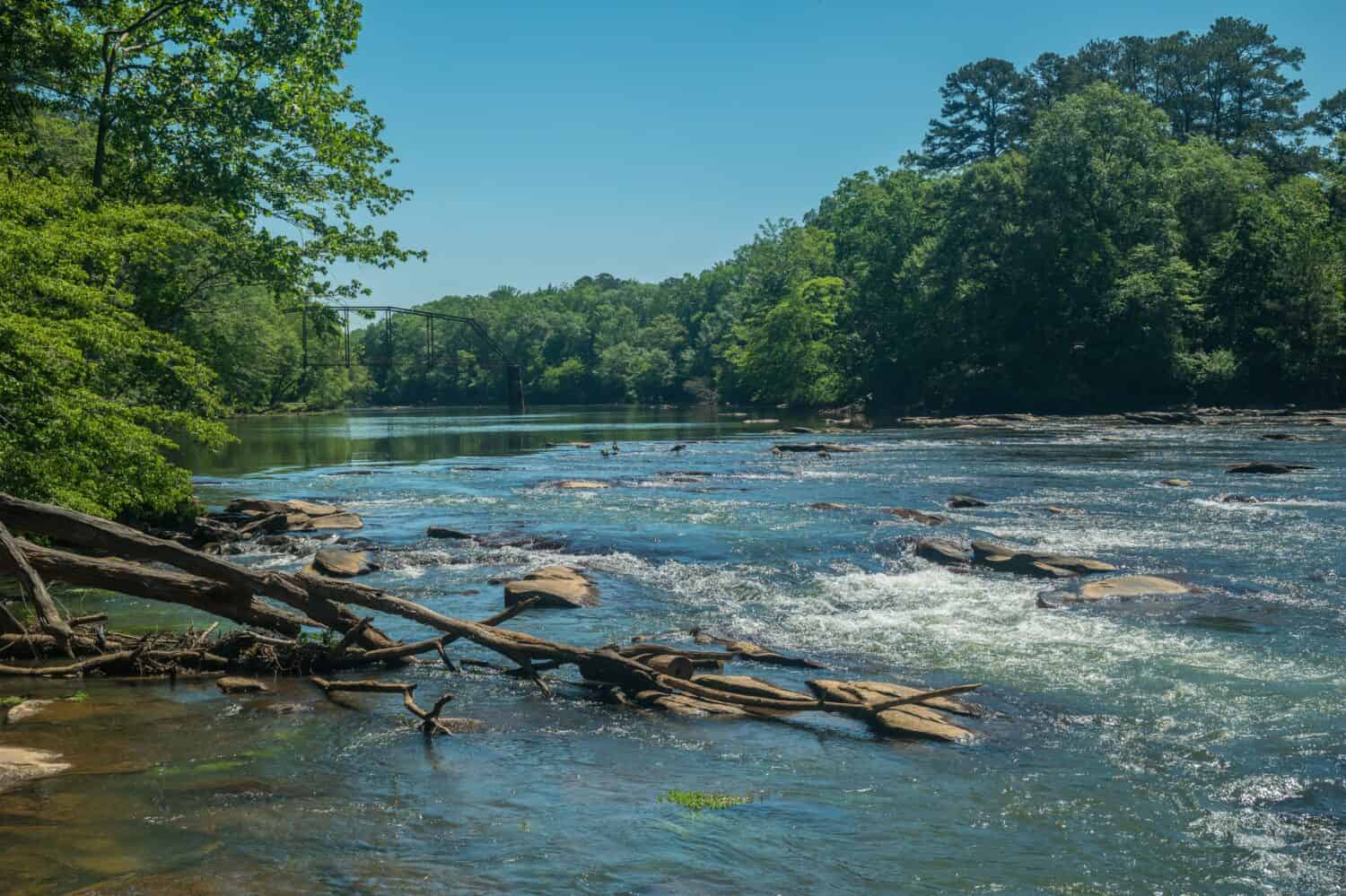
The Chattahoochee brings millions of dollars in economic benefit to Georgia each year.
©Sandra Burm/Shutterstock.com
Summary
Overall, the Chattahoochee River offers hundreds of miles of beautiful shoreline to visitors and residents, attracts boaters and water recreationists, generates millions in economic benefit, powers cities like Atlanta and Columbus, and continues to have a vital role in the economy and culture of the south. From North Georgia to the Florida panhandle, the Chattahoochee offers an escape to nature that builds on thousands of years of human history and demonstrates just how interconnected every aspect of the world is.
The photo featured at the top of this post is © Rob Hainer/Shutterstock.com
Thank you for reading! Have some feedback for us? Contact the AZ Animals editorial team.






